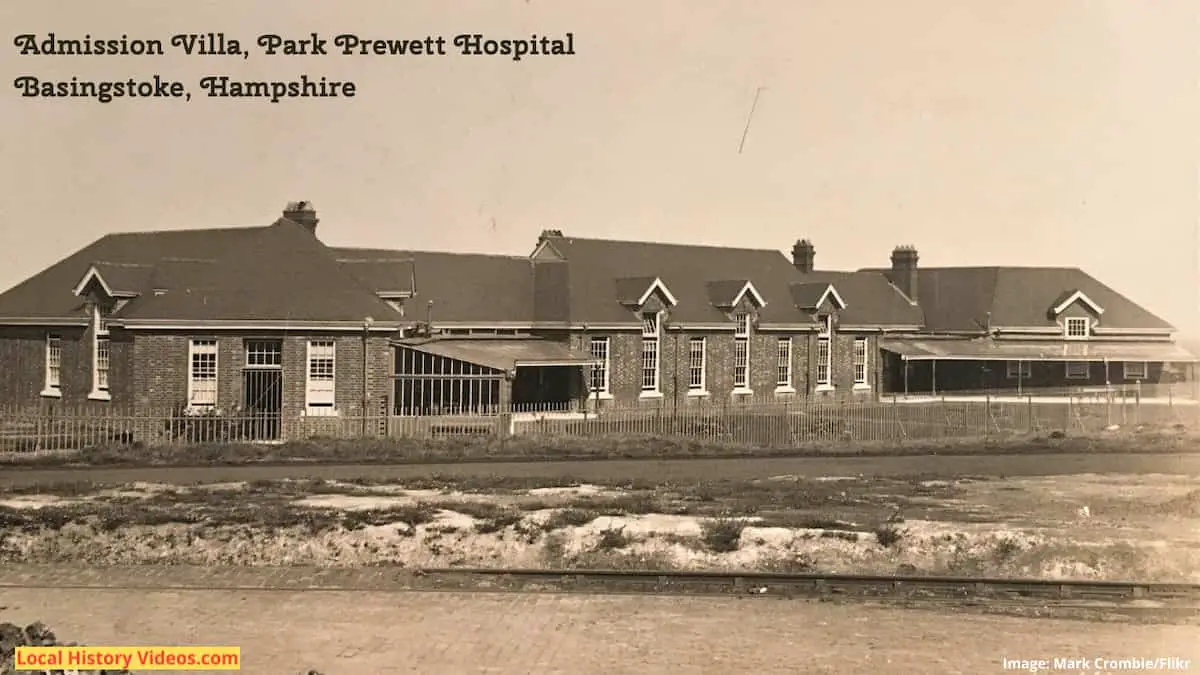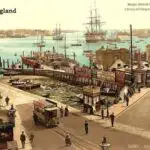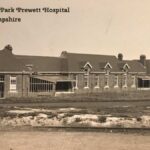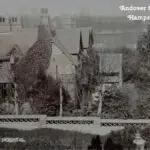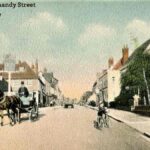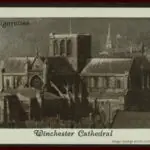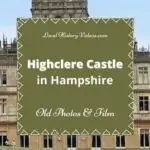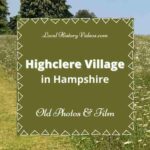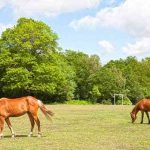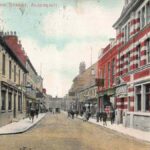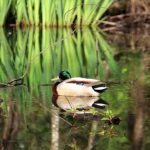Glipse history through old images of Basingstoke, Hampshire, England.
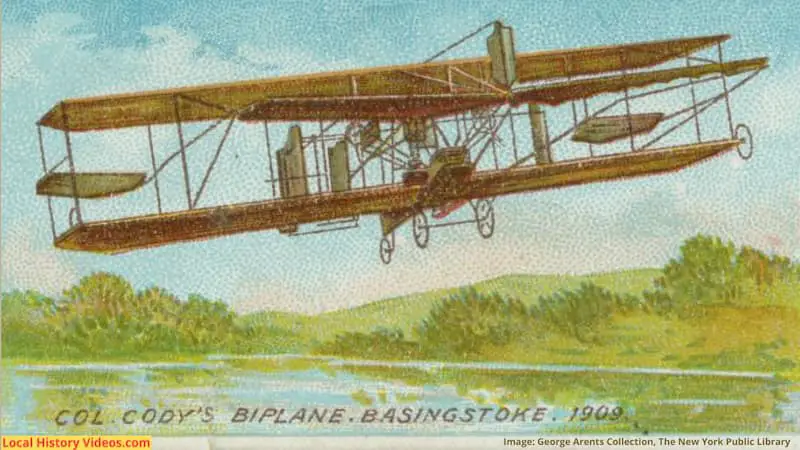
Sir Arthur Holbrook (1920)
In 1920, Colonel Sir Arthur Richard Holbrook, M.P. for Basingstoke, was congratulated on his election success by his son, Lt. Cdr. Norman Holbrook V.C.
A British newspaper proprietor, Sir Holbrook (28 April 1850 – 24 December 1946) won the seat at the 1920 by-election, lost it in 1923, was re-elected in 1924, and stood down in 1929.
Holbrook Wins Election (1920) – British Pathé on YouTube
New Housing (1953)
On 30 Apr 1953, some new houses at Basingstoke were viewed by Mr David Eccles (18 September 1904 – 24 February 1999), then the Conservatives’ Minister of Works, and Mr Ernest Marples (9 December 1907 – 6 July 1978), then the Parliamentary Secretary in the Ministry of Housing.
There seemed to be a potential issue with the supply of softwood, so there was a signboard showing the alternatives.
PERSONALITIES IN THE NEWS – MINISTERS SEE NEW HOUSES – British Movietone on YouTube
Pylon Men (1956)
A reel of footage marked as close to Basingstoke shows the dangerous work pylon men used to do with very little health and safety equipment.
We see Doug Giddes and Sean O’Malley clambering about at great heights with no safety nets.
Pylon Men (1956) – British Pathé on YouTube
Rolls Royce Silver Ghost (1967)
Ken and Jean Rush appear in a short reel about the interest in vintage cars. James Skinner owns the Rolls, and calls his house Old Crockington.
Vintage Car Artist (1967) – British Pathé on YouTube
New Sports Centre (1969)
A news item about Basingstoke’s new sports centre, broadcast on 10th December 1970, includes some great shots of the shopping centre.
The sports centre cost almost £750,000 to build, and was opened by the Duke of Edinburgh and a young Prince of Wales (now King Charles III). The royal visitors speak to many of the adults and children enjoying the facilities.
NEW SPORTS CENTRE – British Movietone on YouTube
Perhaps associated with this item, there is a reel which contains silent footage of Basingstoke’s shopping centre along with a mix of other locations. Here it is:
ODD STOCK SHOTS – NO SOUND – British Movietone on YouTube
Cemetary Vandals (1971)
In 1971, vandals went on a shocking rampage through the cemetary at the Church of the Holy Ghost, damaging the memorials and headstones of 170 graves, and causing £10,000 worth of damage.
VANDALS WRECK CEMETERY – British Movietone on YouTube
A Bit of Basingstoke History
Extract from: “History, gazetteer, and directory of Hampshire and the Isle of Wight“, by William White
Published in 1878
Pages 128 – 133
BASINGSTOKE, an ancient and improving market town and municipal borough, and the capital of a petty sessional division, hundred, union, and county court and polling district, in North Hants, is pleasantly situated at the junction of five great roads, at the head of a canal, and near the source of the river Loddon, in a fine open country, near the North Downs, 18 miles N.E. of Winchester, 10 miles N.N.W. of Alton, 8 miles W. by N. of Odiham, about 16 miles from Reading and Newbury, and 46 miles W. by S. of London. It has a railway station on the London and South – Western Railway, at a junction of a branch line from the Great Western at Reading. Its parish and municipal borough, which are co – extensive, is in South West Basingstoke deanery, and had 5574 inhabitants in 1871. (See also Vital Statistics, ‘ p. 62. ) It comprises 4036 acres of land, including the farms of North, West, and South IIam; Crossways, Bury. Buckskin, & c. The parish includes part of the extensive and beautiful park of Hackwood, as noticed with Basing parish.
The Corporation are lords of the manor, but the soil belongs chiefly to Lord Bolton, Merton College, Oxford, and many smaller proprietors. West Ham has been recently purchased by Samuel Peters, Esq., who has converted the house into a neat mansion, and part of the farm into pleasant grounds to the house.
The common fields and waste lands were all enclosed under an Act passed in 1786, except a stinted common of 107A. on the east side of the town, which was allotted to the owners of houses and tenements in the borough in lieu of their former rights of pasturage after harvest over the common fields, This common affords excellent pasturage, and is open from May till January, for the cattle of the owners and occupiers of the tenements to which common right was attached at the enclosure. The stinted number is 276, but there are seldom more than 180 head of cattle upon it at a time. The management of the common is vested with the Mayor, two of the Borough Justices, and the four Church wardens.
About two miles west of the town is an eminence called WINKLEBURY, upon which is an ancient encampment, about 1100 yards in circumference, but of an irregular shape, approaching to an oblong form. It has two entrances, but all traces of the ditch are gone. It is supposed to have been occupied by the Saxons or Danes, if not by the Ancient Britons.
The district is said to have derived its name from the ‘Basingas,’ a Saxon tribe, which had a settlement here. In Domesday Book the parish is called Basingstoches, and is recorded as having always always been a Royal manor; as never having paid tax, nor ever been distributed into hides; and as having a market worth thirty shillings.
On the establishment of the woollen manufacture Basingstoke obtained an extensive share, and was long noted for its druggets and shalloons; but this trade left the parish more than a century ago.
The town has now two corn mills, several malthouses and breweries; a trade in corn, coal, timber, & c.; two banks; and foundries and millwright and engineering works, An Act for cleansing, paving, and lighting the town and borough, under a body of self – elected commissioners, was obtained in 1815.
BASINGSTOKE CANAL extends about 37 miles eastward to the Wey and Arundel Canal, by which it communicates with the river Thames. It passes, near Odiham, through a tunnel about a mile long. It was made under the powers of Acts of Parliament passed in 1777 and 1790, by a company of proprietors, with a capital of £126,000, raised in £100 shares. After expending their capital the company borrowed £32,000 to complete the works. They have never received any dividends on their shares, and the arrears of interest on their bonded debt of £32,000 now amount to £105,000. The canal was opened in 1796, and closed some years ago; and since then the tunnel has fallen in.
It is probable that in Saxon times Basingstoke was of less importance than the village of Old Basing, which is about two miles further down the Loddon valley. But it sent members to Parliament from the 23rd of Edward I. till the 4th of Edward III., when it is supposed the privilege ceased at the solicitation of the inhabitants.
The BOROUGH was, however, incorporated by a charter granted by James I., and confirmed by Charles I., under the name of the Mayor, Aldermen, and Burgesses of the town of Basingstoke. The old corporation consisted of a mayor, seven aldermen, and seven capital burgesses, with a high steward, recorder, town clerk, and other officers. Its Charter of Liberties ‘ was confirmed as early as the 3rd of Edward III., and it received a license to have a common seal and community of writings in the 15th of Richard II. This charter was confirmed again in the reigns of Henry V. and VI., and a license for a fair at Whitsuntide is included in the last. Under the Municipal Reform Act of 1835 the Borough is now governed by a Mayor, four Aldermen, and twelve Councillors, and has had a commission of the peace granted to it. The income and expenditure of the Corporation in 1837 was about £12,000, and in 1875 £4000. They are lords of the manors of Basingstoke, Up – Nately, and Maidenwell, the latter of which is a small manor in Lincolnshire. They hold court leets and baron in October. The Corporation for 1876-7 consists of the Mayor (Alderman Knight), Aldermen- Knight, A. Wallis, H. Portsmouth, and Thomas Moore, and Councillors John Dew, Henry Allen, John Portsmouth, F. D. Awbery, H. M. Powell, James Poulter, Edward Taplin, Painter, J. C. P. Curtis, and J. Follett. W. H. Bayley, Esq., is town clerk. PETTY SESSIONS for the town are held every Tuesday, at the Town Hall, by the borough magistrates, namely, the Mayor, the ex – Mayor, H. Downs, Esq., and R. Wallis, Esq. S. Chandler, Esq., is their clerk. The Petty Sessions for Basingstoke division are held weekly at the Town Hall, and the magistrates usually sitting here are W. L. Selater, Esq. (chairman ), Lord Bolton, Sir N. Rycroft, Bart., W. W. B. Beach, Esq., M.P., W. L. N. Chute, Esq., R. P. Fitzgerald, Esq., F. J. E. Jervoise, Esq., W. S. l’ortal, Esq., Major R. P. Warren, and Edward Bates, Esq., MP. Messrs. Lamb and Brooks are their clerks.
BASINGSTOKE COUNTY COURT district comprises all the parishes in Basingstoke and Hartley Wintney unions. The court is held monthly, at the Town Hall; Patrick Marcellinus, Esq., is judge; J. W. Lamb, Esq., registrar; and Mr. Thomas Beard, high bailiff. Mr. Mark Hibberd is superintendent of the borough police, and has a sergeant and five constables. Mr. John Luxford is town crier.
The BOROUGH CHARITY TRUSTEES are appointed under the Municipal Reform Act of 1835 for the management of all the charities, formerly vested with the Corporation.
The town is well built, and has several good streets, lined with neat houses, shops, and inns and taverns.
It has a market every Wednesday for corn, cattle, & c., and every Saturday for meat, poultry, vegetables, & c.
Here is a great sheep, lamb, cattle and horse fair on July 13, and a pleasure and hiring fair on October 11 in each year; and there was formerly a large wool market on the last Wednesday in June; and fairs for cattle, sheep, & c. were held on Easter Tuesday, Whit Wednesday, September 23, and October 11. The October fair was also a hiring – day for servants.
The Town HALL is a large and handsome building, erected in 1832, by the Corporation, at a cost of about 10,000, including the purchase of the site and the old buildings which stood thereon. It comprises a handsome hall for public meetings, balls, concerts, & c., 60 feet by 30; a large council – room, an ante – room, and other convenient offices, and magistrates ‘ rooms, & c.
The CORN EXCHANGE is in Wote Street, and is said to be the largest in Hampshire. It was erected in 1865, at a cost of £4200, by a company, in £25 shares; but in 1874 the Corporation, who were the largest shareholders, paid off the others and became sole proprietors.
Behind the Town Hall is the Market – place, for the sale of meat, poultry, fish, vegetables, & c.
The GAS WORKS were constructed in 1834, at the cost of about £3000, raised in £20 shares, but they have since been much improved and enlarged. Consumers are charged at the rate of 5s. 10d. per 1000 cubic feet, which charge yields a profit of about 7 per cent.
BASINGSTOKE UNION comprises all the 37 parishes, & c. which form Basingstoke division of North Hants: and it also includes Steventon, in Kingsclere division, and Beech Hill tithing, in Berkshire.
The WORKHOUSE is in Basing parish, and has room for 420 inmates, but had only 177 paupers in 1871. It was built in 1835-6, at the cost of about £7500. The expenditure in 1876 was £2324 3s, 9d. George Sear is the union clerk and superintendent registrar; Mr. George and Mrs. Elizabeth Atkins are master and matron of the Work house: the Rev. R. F. Hessey, M.A., is the chaplain.
Mr. L. L. Redgrove is registrar of marriages, and also of deaths for Basingstoke district; Mr. Thomas White, registrar of deaths for Bramley district; and Mr. J. Bullimore for Dummer district ; Mr. W. L. Curtis relieving officer for Basingstoke district ; Mr. T. White for Bramley district ; and Mr. J. Bullimore for Dummer district. Messrs . C. F. Webb, R. B. Sweeting. Thos. Sweeting and G. H. Davis are the medical officers .
The HOSPITAL of ST. JOHN THE BAPTIST, for the maintenance of aged and impotent priests, was built by Walter de Merton, a native of Basingstoke, who was Lord High Chancellor of England, and afterwards Bishop of Rochester and the founder of Merton College, Oxford. About fifty or sixty years ago a part of the Hospital was standing, on land in front of the rectory house, still the property of Merton College, but now all traces of it have disappeared. The foundation charter is dated 46th of Henry III, but its endowment appears in documents of the 3rd of Henry III. It was exempted from episcopal jurisdiction in the 52nd of Henry III, and a provision was made in the 10th of Edward III. that the warden of Merton College should be master of the hospital.
The rectory of Basingstoke, and the advowson of the vicarage, were granted by Henry III. to Selborne Priory in 1233, but the Priory was suppressed by Pope Innocent VIII. in 1408, at the suggestion of Bishop Waynflete, and the living transferred to Magdalen College, Oxford, to which they still belong. Several of the former vicars were eminent for learning and talents. Among them were Sir George Wheeler, 1682, the celebrated Eastern traveller, who founded a library in the church; and Thomas Warton, B.D., sometime professor of poetry in Oxford University, and father of Dr. Joseph Warton, F.R.S. and the Rev. Thomas Warton, B.D., who were born here in 1722 and 1728. The former wrote an Essay on the Writings and Genius of Pope; ‘ and the latter was Poet Laurente when he died in 1790. The earliest eminent native of the town was John de Basingstoke, a subtle philosopher and sound divine ‘ of the 13th century. Richard White, a Romish exile, and Regius Professor of Douay in the time of James 1., was a native of Basingtoke, as was also Sir James Lancaster, an eminent navigator in the reign of Elizabeth. The latter was one of the earliest traders to the East Indies, and gave his own name to Lancaster Sound, in Baffin’s Bay. He died in 1618, and left an estate to his native town, as afterwards noticed.
Basingstoke PARISH CHURCH (St. Michael and All Angels) is a spacious and handsome structure, said to have been built under the auspices of Bishop Fox, early in the 16th century. It was restored in 1840-41, at the cost of £4660, including the erection of large galleries, by which, and the re – arrangement of the old pews, 476 additional sittings were obtained. It has now more than 1400 sittings, about half of which are free. It consists of a nave (said to have been built by Bishop Fox about 1520 ), chancel, and side aisles, with a low but massive tower, containing eight bells and a good clock. The south side is of stone, but the north side is constructed with alternate squares of stone and flint. On the spandrils, and over the doorway leading to the chancel, are several shields of different sizes, inscribed with the initials I.H.S. and other letters. The interior has now a handsome appearance, and contains a good organ, erected in 1866, at a cost of £630. Adjoining the chancel, which belongs to an earlier building, is the Lady Chapel. The east window, a very fine one, is filled with stained glass, executed by Messrs. Laver, Barraud, & Westlake, at a cost of £225: and the west window, similarly enriched in memory of the Revs. James Blatch and Yeadon (the former vicar here for fifty years, and the latter his curate ), were the gifts of the parishioners. The east window of the north aisle is filled with beautiful stained glass from the Chapel of the Holy Ghost, given by Lady Mill, in whose family it had been preserved since it had been removed from the chapel; and in 1868 a new east window was filled with stained glass by Messrs. Laver, Barraud, & Westlake, at a cost of £552. Above the communion – table is an ancient triptych. A pulpit, of carved oak, on a stone base, was erected in 1873 as a memorial of Bishop Wilberforce. There are a few monumental brasses in the chancel, besides many neat mural monuments.
Basingstoke vicarage, valued in K.B. at £30 16s, 4 ½ d., and now at £572, is in the patronage of Magdalen College, Oxford, and incumbency of the Rev. James Elwin Millard, D.D., who has 17 acres of glebe, and a good vicarage house, built in 1763 by the President and Fellows of Magdalen College, the appropriators of the rectory, of whom he also holds on lease 30A. 3R. 31P. of rectorial glebe, and also the rectorial tithes. The latter have been commuted for £787 1s., and the vicarial tithes for £497 11s per annum.
Since 1814 the incumbent has been both vicar and lecturer. In the latter capacity he receives 200 a year, for reading prayers and delivering a lecture every Friday. Of this yearly sum £40 was left by Sir James Lancaster, and £10 each by Sir James Deane and Richard Aldworth, as afterwards noticed.
In London Street is a large and handsome INDEPENDENT CHAPEL, built in 1800, at the cost of about 22000, and enlarged and repaired in 1840, at an expense of £167. It has 700 sittings, and an endowment of 30 a year. The church was formed and the first minister elected in 1686, but it is most probable that its real existence dates from 1662. The first minister was the Rev. John Hook, rector of Kingsworthy, who was one of the ” ejected ‘ of 1662.
The schoolroom was enlarged and class – rooms added in 1872, at a cost of 2000; and a new organ was built in 1875, at a cost of £285. There is a good library in connection with the school.
In New Road is another INDEPENDENT CHAPEL, now under the ministry of Mr. L. L. Redgrove; and one was built in 1872 at Worting Town end, at an outlay of £200.
LADY HUNTINGDON’S CHAPEL, in Wote Street, was built in 1779, and enlarged and restored in 1874, at a cost of £450, raised by subscription. There is a good organ, and 300 sittings; the Rev. W. Hornce Hines is its pastor.
The WESLEYAN CHAPEL, in Church Street, was erected in the Gothic style in 1875, at an outlay of 1400, raised by subscription; there are 320 sittings, and in connection with the chapel is a good Sunday School.
Here is also a small PRIMITIVE METHODIST CHAPEL, built in 1847; and in Wote Street is an old FRIENDS ‘ MEETING HOUSE, which has a burial ground in Reading Road.
In 1858 the Burial Board provided for the parish a new CEMETERY of about 3 acres, on the north side of the town, upon an eminence adjoining the ruins and old burial ground of Holy Ghost Chapel. It has two neat chapels, one of which, and more than half of the ground, were consecrated by the Bishop on July 20, 1858. The cost of the ground, chapels, lodge, enclosure walls, & c., was about £3500.
BLUE COAT SCHOOL AND ALDWORTH’S CHARITIES – In 1646 Richard Aldworth bequeathed to the Corporation of Basingstoke £2000, upon trust that they should purchase lands with it of the clear yearly value of 103 10s. 8d. or upwards. After paying yearly 10 to the lecturer of the parish, £138. 4d. For clothing ten poor widows, and £5 48. for weekly distributions of bread, he directed the rest of the income to be applied in supporting a BLUE COAT SCHOOL, for the education, clothing, and maintenance of ten, but now seven, poor boys, and for apprenticing one or more of them yearly. The property held by the trustees of Adworth’s Charities consists of £5488 12. 9d. three per cent. Consols, and the Blue Coat School premises, which consist of schoolrooms now used as the Boys ‘ National School, and two adjoining houses, one occupied by the schoolmaster, and the other by the mistress of the Girls ‘ National School. For augmenting the prentice fees given with the Blue Coat Boys the Rev. Thomas Sheppard, D.D., gave the dividends of & Sd three per cent. Stock. The ten Blue Coat Boys are educated by the master of the Boys ‘ National School, who is allowed yearly £20 for their instruction, and 20 a year per boy for providing them with food and lodging and with clothing of the same description as that provided for the boys of Christ’s Hospital, in Londen. The seven boys are now appointed by the Charity Trustees, who select them from the of poor settled inhabitants of Basingstoke.
The Boys ‘ NATIONAL SCHOOL is held in the Blue Coat schoolroom, which was enlarged for its present use about 1820, mostly at the expense of the relict of the late Dr. Sheppard, and again in 1863, at a cost of £1200, raised by subscription. It is supported chiefly by subscription, but part of its income is derived yearly as follows: – £13 6s. 8d. from Sir James Lancaster’s Charity, and £20 from the dividends of £636 138. 4d, three per cent. Stock, given by the Rev. Thomas pard, D.D., who also left £333 6. 8d. of the same stock to the GIRLS ‘ NATIONAL SCHOOL, to which his widow, Mrs. Sophia Sheppard, in 1818, gave 5A. 28. 20r. of land in Wildmoor, now worth about £19 per u. Each school is attended by more than 100 children.
Towards the support of the Church Sunday School the same benevolent Dr. Sheppard left £15 a year out of Winklow Barrow Farm and Hound Mills.
The ParrisH SCHOOL, in Sarum Road, was built in 1841, at the cost of £650, and has more than 200 pupils, A cerered playground has been constructed, at the cost of about £200. A schoolroom for the infants ‘ department was erected in Sarum Street in 1875, at a cost of £700, of which 150 was given by the Educatical Department, and the rest raised by subscription. (For School Board information see Addenda. ‘ )
Basingstoke has a MECHANICS ‘ INSTITUTION, which was established in 1841, and has now a good library of nearly 2000 volumes. A new Institute was erected in New Street in 1869, at a cost of £900, raised by description; it has a large room for concerts and reading, & c. rooms. The Earl of Portsmouth is the on Henry Downs, Esq., president; Mr. George Gage, secretary; and Mr. F. J. Rogers, librarian and collector Bible, Missionary, and other institutions for the promotion of religious knowledge have for many Te been liberally supported here, and the borough has many Charities and Provident and Benevolent Institutions Those charities formerly vested with the Corporation are now managed Trustees.
The SAVINGS ‘ BANK, held at the Town Hall, was established in the year 1817, and on November 20, 1876, its deposits amounted to about £36,083 14s. d., belonging to 849 depositors and 61 Friendly and 11 Charitable Societies. The receipts during the year amounted to £6328 1s. 4d., and the payments to £4913 8s. 10d.
There are in the town several Benefit and Friendly Societies, and also Lodges of Freemasons, Oddfellows, and Foresters. The Oakley Lodge of Freemasons, No. 604, was founded here in 1857, under the presidency of W. W. B. Beach, Esq., M.P., of Oakley Park, and meet at the Freemasons ‘ Hall, in Church Street.
The Provident Coal and Soup Society is aided by the contributions of the wealthier for the benefit of the poorer classes.
St. Thomas’s Home for fallen women, on the Sherbourne Road, was erected in 1876, at a cost of £750, raised by subscription: there is accommodation for 12 inmates.
The BRITISH WORKMAN PUBLIC HOUSE was established in 1876, and has 200 subscribers. Mr. Richard Wallis is the secretary.
HOLY GHOST CHAPEL, the venerable and interesting ruins of which are on a commanding eminence on the north side of the town, had its name from its having been connected with a brotherhood or guild of the Holy Ghost, instituted by Sir William Sandys, Knight (afterwards Lord Sandys ), and Bishop Fox, under a license from Henry VIII. This fraternity was dissolved in the 1st of Edward VI., and its possessions vested in the Crown; but in the reign of Queen Mary a brotherhood was again established here, and the former possessions re – granted, for the maintenance of a priest for the celebration of divine service, and for the instruction of young men and boys of the town of Basingstoke. ” About the 1st of James I. this brotherhood became extinct, and during the confusion of the Civil Wars the chapel estate was seized by the Parliament, and the school shut up; but through the care of Bishop Morley the estate was again restored in 1670.
The site of the chapel was occupied by a religions structure as early as the Saxon era. The present ruins appear to be of the age of Edward IV. The only parts now standing are the south and east walls, with a hexangular tower at the south – west angle. On the piers between the windows of the south side are long narrow pedestal, with niches rising above them. The angles of the tower are similarly decorated.
This once beautiful chapel appears to have been first dilapidated during the civil wars, and it has been almost entirely neglected ever since. When besieging Basing House the Parliamentarian soldiers stripped the lead off the roof and cast it into bullets.
About 1818 the remains of the north wall were pulled down by a late schoolmaster, who would have levelled some other portions of the ruins had not the townspeople interfered and raised a subscription for their preservation.
The small burial ground is called the Chapel Liten, and adjoining it stood the old school, with appropriate apartments for the usher.
In 1816 the late Rev. William Workman was appointed chaplain and schoolmaster by the king’s letters patent. At his death in 1849 the School had been for many years of little use to the parishioners, who memorialised the Lord Chancellor for a new scheme for its future management, so as to make it suitable to the requirements of the present age. A new scheme was obtained in 1852, and under it a handsome new school was erected in 1855, on 24 acres of land, on the west side of the town; and is now styled the QUEEN’S FREE GRAMMAR SCHOOL, formerly the Holy Ghost School. This new school, including the master’s house, playground, & c., cost about £2300, raised by subscription, and by a large mortgage on the school lands. A new schoolroom was erected in 1875, at a cost of £500. It is now vested with eight trustees, including the Vicar and Mayor of Basingstoke. Three of them are appointed by the Town Council and three by the Charity Trustees. The school endowment is about £210 per annum, of which £132 is the rent of the Down Farm (100A. ), which was allotted at the enclosure in 1786, in lieu of lands in the Common Fields of Basingstoke. But during the next few years a large portion of the income will have to be applied towards the repayment of the money borrowed for the erection of the new school. The school is free only for Latin and Greek, to boys of Basingstoke; and the master is allowed to take 30 boarders. There are several scholarships of £15 given to boarders by the head – master. The Rev. Arthur Forster Rutty is head – master.
In April 1876 the original accounts of the Ancient Guild of the Holy Ghost, Basingstoke, from A.D. 1557 to A.D. 1650, were discovered amongst a mass of papers in the Hartley Institution, Southampton, by Mr. T. W. Shore, F.C.S., of Southampton, the principal officer of the Institution, where they may now be seen in the department of local antiquities.
DEANE’S ALMSHOUSES, in London Street, consist of eight tenements, under one roof, each containing two apartments, and having a small garden behind. They are occupied by eight poor widows, six of whom are of the town of Basingstoke, and are appointed by the Charity Trustees; and the other two are from the parish of Denne, and are appointed by the minister and church wardens of that parish. They were founded by Sir James Deane, who erected them in 1607, and endowed them with a yearly rent – charge of £05 (no £75 78. 4d. net ), out of the manor or farm of Ashe. Out of this rent – charge each of the eight almswomen receives 20 ls. 4d. yearly, and 138. 4d. each in lieu of gowns. The remainder is retained for repairs, & c. The eight almswomen also receive 1s. each per week from the dividends of £603 6s. 8d. three per cent. Consols, purchased pursuant to the will of Francis Russell in 1794. The six belonging to Basingstoke have also divided among them the dividends of £523 three per cent. Reduced Annuities, given by the Rev. Thomas Sheppard, D.D., for charitable uses, and vested by his widow, in 1816, for the above – named purpose.
LITTLE ALMSHOUSES AND CHAPEL STREET HOUSES. – The former are three cottages in Reading Road, and the latter are four cotta in Chapel Street. They are repaired by the Overseers, and are occupied by poor people put in by the Churchwardens and Overseers. They are not endowed, and it is not known how the parish became possessed of them.
ACTON’S ALMSHOUSES, in Flaxfield Road, are four cottages occupied rent – free by poor persons. They were bequeathed to the poor by James Acton, about 1600; and one of his descendants, Mrs. Ann Cowslad, in 1814, left £400 for their reparation.
PAGE’S ALMSHOUSES, in Hackwood Lane, comprise three tenements, with a garden in front, and were founded in 1802 by Joseph Page, of London, who endowed them with the rents arising from six house and several gardens and plots of land, now yielding about £120 per annum. According to the founder’s wish the trustees are all of the Independent persuasion, and select the three almswomen from poor inhabitants of Basingstoke of that denomination. Each inmate has 58. a week and a ton of coals yearly. ”
VARIOUS CHARITIES. – About 1607 John Wigg gave £100 to the Corporation, in trust to pay the yearly interest of £80 thereof to the master of the Grammar School, and the interest of £20 to the poor. In 1601 Richard Deane left to the poor parishioners a yearly rent – charge of £5 4s, vested with the Corporation. In 1612 John Hall left, out of Round Meadow, a yearly rent – charge of £5 4s. for a weekly distribution of bread at the church. In 1619 Matthew Stocker left £10 to the Corporation, in trust, to distribute the interest among the poor. In 1622 Robert Payne left £100 to the Corporation, in trust, to be lent from time to time to three young clothiers for four years, at the yearly interest of 20s. to be given to the poor. The clothing business at Basingstoke was nearly extinct in 1780, after which year the Corporation paid £4 a year in consideration of this £100, for distribution among the poor parishioners, who have also 4 138. 4d. yearly from the Corporation, as the interest of £100 given by George Pemerton in 1634. For clothing poor aged people John Smith, in 1638, left a yearly rent – charge of 4 out of ten tenements in the town. To this charity is added 2 yearly as the interest of £40, which arose from ten years ‘ arrears. Sir James Deane, the founder of the almshouses, left a yearly rent – charge of £10 8. out of the manor of Deane, to be distributed in bread among the poor of Basingstoke by the church wardens. In 1732 William Blunden left for the poor of Basingstoke not receiving parochial alms a yearly rent – charge of £10 out of an estate at Warbsdown, in Surrey,
CHARLES, DUKE OF BOLTON, in 1604 left to the poor of Basing, Basingstoke, Sherfield, Newnham, Winslade, and Weston – Patrick £102 per annum, to be paid out of certain estates now held by Lord Bolton. Aiter deducting £20 88. for land – tax, the rest of his annuity (281 128)is divided among the six parishes as follows: -233 128 to Basingstoke; £24 to Basing; £10 16s. to Sherfield; £4 16s. to Winslade; 2G to Newham; and £2 88. to Weston – Patrick.
SIR JAMES LANCASTER, by will dated 1618, bequeathed to the Skinners Company, in London, certain lands, & c., in trust, that they should pay out of the rents and profits thereof the yearly sum of £118 68. 8d. to the Corporation, Lecturer, and Churchwardens of Basingstoke, to be applied by them as follows, viz.:-40 for the augmentation of the lecturer’s salary: £45 for distribution among the poor parishioners; £20 to the usher of the Holy Ghost School; and £13 68. 8d, to the master of the Petty School, now united with the National School. In 1720 the estates left by Sir James Lancaster were transferred from the Skinners ‘ Company to the Corporation of Basingstoke, who now hold them, subject
to the above annual payments, and also to the yearly payment of 103 Ge. sd, to the said Skinners ‘ Company, for various charitable uses; and to the annual payment of £10 to the poor of Kingsclere, and £20 to the free schoolmaster of that parish. The property (now worth about £300 a year)from which the above payments are made is in London, and an estate at Maidenwell, in Lincolnshire.
The 25th HANTS RIFLE VOLUNTEER CORPS, formed in 1875, has a strength of 80 men, and its armoury is in Church Street. Col. Hardinge is captain; C. F. Webb, Esq., surgeon; and Sergt. J. Bowles, drill instructor.
POST, MONEY ORDER, and TELEGRAPH OFFICE, SAVINGS ‘ BANK, and GOVERNMENT INSURANCE and ANNUITY OFFICE, Wote Street; Miss Jane Curtis, postmistress, Letters are received at 4.20 and 10.20 a.m. and 440 p.m., are delivered at 7 and 11 a.m. and 5 p.m., and despatched to London and all parts at 0.20 A.; London, 3,55 p.m.; Reading and West of England, 7.45 p.ni.: and at 9.45 p.m. to London and all parts. The Money Order Office is open from 9 a m. to 6 p.m., and on Saturdays to 8 p.m.; and the Telegraph ice from 7 n.m. to 9 p.m. weekdays, and 8 to 10 a.m. Sundays.
There are PILLAR LETTER BOXES at Winchester Street, Sarum Rond, and Church Street.
There are TELEGRAPH OFFICES at the Railway Stations
RAILWAYS – Great Western Station, Station Hill; Richard Walker, station – master. London and South Western Station, Station Hill; John Harvey, station – master.
More about Hampshire
- Old Images of Hampshire, England
- Old Images of Bordon, Hampshire
- Old Images of Basingstoke, Hampshire
- Old Images of Andover, Hampshire
- Old Images of Alton, Hampshire
- History in Old Images of Winchester, England
- History in Old Images of Portsmouth, England
- Old Images of Southampton, England
- Old Images of the Bygone Port of Southampton
- Old Images of the Army at Aldershot
- Old Images of Highclere Castle
- Vintage Film Of Highclere Village
- Hampshire: Local History Resources
- Old Images of Aldershot, Hampshire: History in Film
- Schools In Fleet & Church Crookham: Old Videos
- Old Images of Fleet, Hampshire

